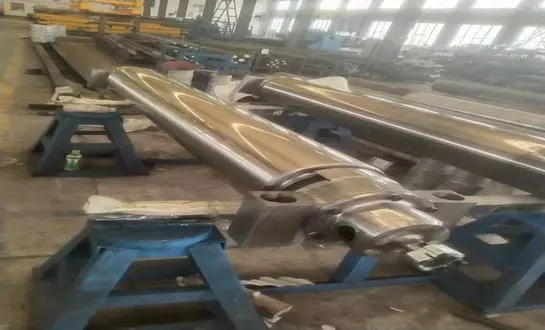What makes a roll "high-quality" in steel manufacturing?
Material Composition and Metallurgy
The foundation of a high-quality rolling mill roll lies in its material composition. Advanced metallurgical techniques are employed to create rolls with optimal hardness, toughness, and wear resistance. Alloying elements such as chromium, nickel, and molybdenum are carefully balanced to achieve the desired properties. The microstructure of the roll material is engineered to withstand the cyclic stresses and thermal shocks inherent in rolling processes.
Surface Characteristics and Finishing
The surface quality of rolling mill rolls is paramount in producing high-grade steel and iron products. High-quality rolls feature precisely machined surfaces with controlled roughness profiles. Advanced finishing techniques, such as chrome plating or thermal spraying, can be applied to enhance surface hardness and wear resistance. These treatments contribute to improved product surface quality and extended roll life.
Dimensional Accuracy and Uniformity
Precision in roll manufacturing is critical for maintaining tight tolerances in rolled products. High-quality rolls for steel mills are manufactured with strict adherence to dimensional specifications, ensuring uniformity across the roll barrel. Sophisticated machining processes, including CNC turning and grinding, are utilized to achieve the required geometrical accuracy. This precision translates directly to the consistency and quality of the rolled steel or iron products.
How to select the right roll grade for your production needs
Understanding Rolling Mill Requirements
Selecting the appropriate roll grade begins with a thorough analysis of your specific rolling mill requirements. Factors such as the type of material being rolled, desired product specifications, and production volumes must be considered. High-speed mills may require roll for steel mills with enhanced thermal stability, while mills producing thin gauge products might prioritize surface finish quality. Consulting with experienced roll manufacturers can provide valuable insights into matching roll grades to specific operational needs.
Evaluating Roll Performance Characteristics
Different roll grades offer varying performance characteristics suited to specific applications. When selecting rolls, it's essential to evaluate properties such as hardness, wear resistance, thermal conductivity, and fracture toughness. For instance, indefinite chill (IC) rolls might be preferred for their excellent wear resistance in hot rolling applications, while high-speed steel (HSS) rolls could be ideal for cold rolling processes requiring superior hardness and thermal stability.
Considering Total Cost of Ownership
While initial purchase cost is a factor, it's crucial to consider the total cost of ownership when selecting roll grades. Higher-quality rolls may come with a premium price tag but often deliver significant long-term benefits. These can include extended service life, reduced downtime for roll changes, improved product quality, and lower overall operational costs. Conducting a comprehensive cost-benefit analysis, taking into account factors like roll life, maintenance requirements, and impact on product quality, can guide informed decision-making in roll selection.
Case study: Improving yield with optimized roll materials
Background and Challenges
A leading steel manufacturer was experiencing frequent roll failures and inconsistent product quality in their hot strip mill. The existing rolls were unable to withstand the demanding operational conditions, resulting in increased downtime and significant yield losses. The company sought to optimize their materials of roll for steel mills to enhance production efficiency and product quality.
Implementation of Advanced Roll Materials
After thorough analysis and consultation with roll experts, the manufacturer decided to implement a new generation of high-chrome (HiCr) rolls in their finishing stands. These rolls offered superior wear resistance and thermal stability compared to the conventional rolls. The implementation process involved careful selection of roll grades for each stand, optimizing roll profiles, and fine-tuning operational parameters to maximize the benefits of the new roll materials.
Results and Long-term Impact
The adoption of advanced roll materials yielded significant improvements in mill performance. Roll life increased by over 30%, reducing the frequency of roll changes and associated downtime. Product surface quality saw marked improvement, with a 25% reduction in surface defects. The enhanced roll performance also allowed for tighter gauge control, resulting in a 15% increase in prime yield. Over a 12-month period, the steel manufacturer reported a substantial reduction in overall production costs and a notable increase in customer satisfaction due to improved product consistency.
In conclusion, the selection and implementation of high-quality roll for steel mills are crucial factors in optimizing steel and iron production processes. By carefully considering material properties, performance characteristics, and long-term cost-effectiveness, manufacturers can significantly enhance their operational efficiency and product quality. As the industry continues to evolve, ongoing research and development in roll materials and manufacturing techniques will undoubtedly lead to further advancements in rolling mill technology. For more information on cutting-edge rolling mill solutions and expert consultation, please contact us at oiltools15@welongpost.com.
Welong, your trusted partner in advanced rolling mill technology, is committed to delivering innovative solutions that drive excellence in steel and iron production.





